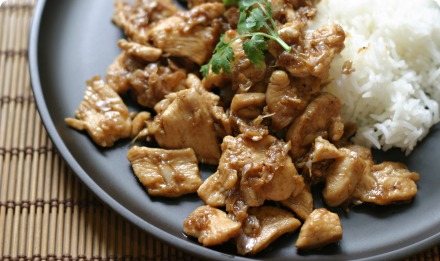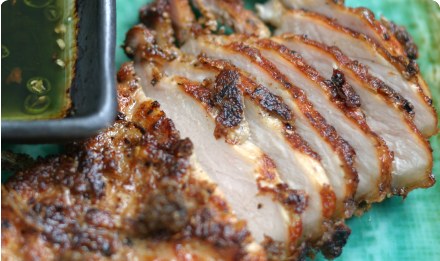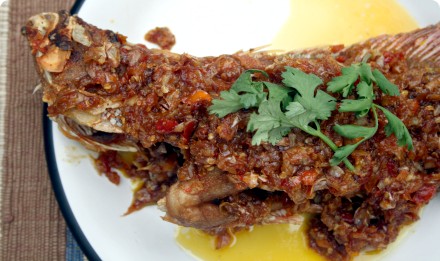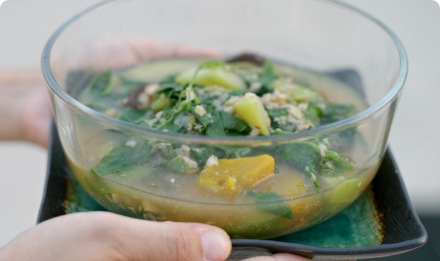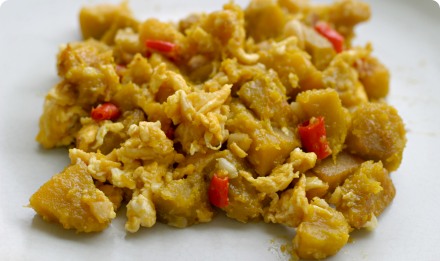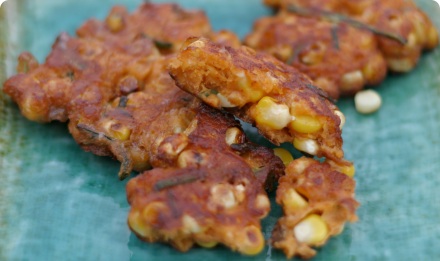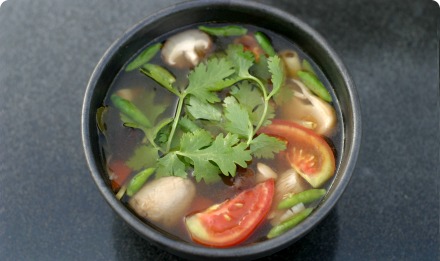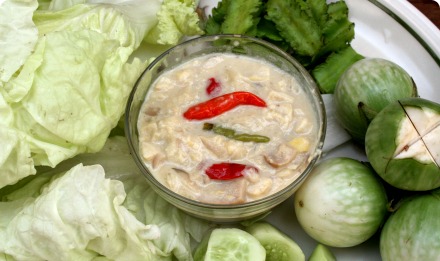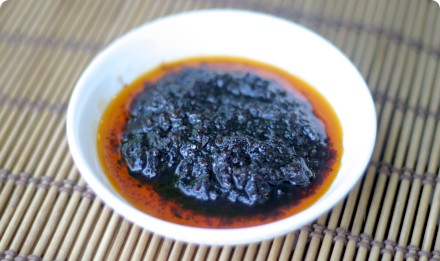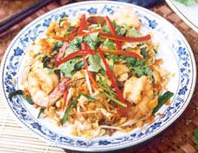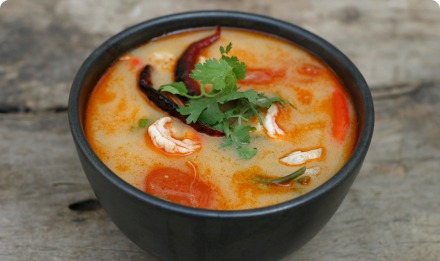 Hot and Sour Soup with Shrimp (tom yum goong, ต้มยำกุ้ง) is
Hot and Sour Soup with Shrimp (tom yum goong, ต้มยำกุ้ง) is probably the most famous Thai dish, both inside and outside of Thailand. It’s eaten very often here, usually in a type of hot pot with fire underneath. There are hundreds of variations of tom yum, and this recipe includes the two most common versions of Tom Yum Goong.
DirectionsPrepare all the ingredients. Remove the outer layer of the lemongrass stalks and cut off the end. Cut into 1-2″ pieces and smash with the side of a heavy knife to release flavor. Tear the center vein off the lime leaves. Slice your galangal into thin slices. Cut the tomato into 6 pieces lengthwise. Peel the skin off the shallots and smash lightly. Clean your coriander roots well. Smash the fresh chilies with the back of a heavy knife, or in a mortar and pestle. If using fresh Thai straw mushrooms, slice the bottoms off and cut in 1/2 lengthwise. If making the version with milk: roast the dried chilies until fragrant and browned in a dry wok on medium heat (see note).
Clean the shrimp by peeling off the backs and snapping off the top part of the heads, but leave the fat on at the base of the head (the reddish brown goop). This is very important, as that fat imparts a signature flavor into Tom Yum Goong. Don’t discard it. Then, peel out the legs + intestine underneath, but leave the tails on. Set aside.
Boil the broth on high until it comes to a rapid boil. (see note about broth below). Add the lime leaves, lemongrass, coriander root, galangal and tomato. Boil for 4-5 minutes until the broth tastes herbal. if you’re using fresh ingredients, 4-5 minutes should be enough. In a separate pan, boil the mushrooms in plain water.
After you’ve boiled 4-5 minutes, add a pinch of salt and the shrimp. Strain the cooked mushrooms and add them to the soup as well. Cook until shrimp turn pink, about a minute.
Add the fish sauce and remove from heat. You will now season the soup.
Add lime juice, chili paste, smashed fresh chilies. Taste the soup. Is it sour? Is it salty? If no, add a bit more, 1/4 teaspoon at a time.
If making the version with milk: Add the milk and dried chilies. If doing this step you’ll need to add a bit more lime juice and fish sauce as the milk tames it down a bit. Add about a teaspoon more of each.
Add cilantro and serve. This soup is best served really hot!
Note:This recipe is for the two most common Tom Yum Goong recipes. Both have chili paste (nam prik pao). The only difference is the addition of milk. Milk gives it a somewhat rounded flavor. It's not enough milk to make the soup creamy, just enough to make it less harsh. If you do add the milk, add the dried roasted chilies and a bit more fish sauce and lime juice as well.
A vegetarian Tom Yum recipe can be found here: Tom Yum Het, a clear version of tom yum made with mushrooms.
You can use freshwater prawns for this soup if you'd prefer.
This recipe makes a small soup, enough for 2 to eat with a meal. If cooking for a larger group you may want to double or triple this recipe.
Thais do not fish out the parts of this soup you don't eat before serving - they know to avoid munching on the lemongrass stalks, galangal, cilantro root and lime leaves. If serving this to guests who are unfamiliar with Thai food, you may want to let them know what to eat and what not to eat, or fish out the herbs before serving.
Pork or Chicken broth can be made by simply boiling pieces of pork or chicken in water. Leaving the meat on the bone is best. If you do cheat and use a flavor cube or pre-made broth, make sure it's simply meat broth and not flavored with vegetables as well.
